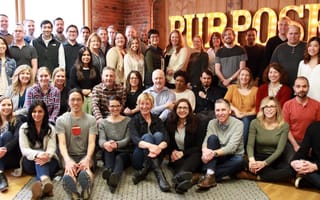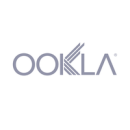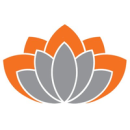There are few constants for product management roles from company to company — it is possibly the most varied role in tech — but one of them is the need to keep an eye on industry trends. Product managers must know what their customers need right now, while retaining the ability to zoom out, forecast the long-term direction of an industry and, in doing so, anticipate or even effect change.
To learn more about how startups stay abreast of what’s going on in their corner of the tech industry, we spoke to product managers at four Seattle tech companies about what trends catch their eye, and how they adapt.

By applying the principles of traditional CRM software, Navigating Cancer’s “patient relationship platform” helps doctors take care of cancer patients outside of their scheduled appointments. Through the tool, oncology doctors can track patients’ symptoms and whether they’re taking their medication, among other functions. The company recently raised $12 million in funding, and is building out its big data capabilities to help optimize cancer care on an even wider scale.
Senior Director of Product Management Laura Ford pointed out that success in the health tech industry requires a sharp eye for government regulation.
How do you stay up to date on the latest product trends in your industry?
We attend conferences, read industry articles, monitor competitive trends and, most importantly, listen to our customers. Customer input comes from a variety of sources, including customer support calls and emails, direct customer observations and interviews, sales presentations and feedback from our clinical success managers.
We also pay attention to regulatory updates. The rapidly evolving regulatory environment makes this a fascinating time to work in healthcare technology. Data that has long been inaccessible — or challenging to access — is becoming more available, which opens up interesting opportunities for innovation and creating great experiences for clinical customers and better outcomes for patients.
We are currently building innovative new features that leverage SMS messaging and email to improve and extend the digital connection between patients and their care teams.”
How do you adapt your methodologies or technologies as trends evolve? Can you share a specific example of a time when industry trends influenced your work?
We are seeing rapid change in patients’ level of comfort with digital communication with their healthcare providers. Consumer trends in SMS messaging and digital communication are carrying over to patient preferences. We are currently building innovative new features that leverage SMS messaging and email to improve and extend the digital connection between patients and their care teams. We see this as a great development in patient experience — patients who are more informed and more connected with their care team and decisions have better outcomes. This work ties directly into Navigating Cancer’s mission to improve the lives of cancer patients, and those who care for them.
Ookla’s Speedtest software is a one-stop shop for internet data, testing and analysis to measure performance and network diagnostics. The company uses its data to create research tools, including data visualization and analytics for mobile coverage, WiFi network planning, site survey tools, real-time analysis for service outages and more. Originally named after a co-founder’s cat, the company is proud of its somewhat quirky culture. For example, their new hire orientation program involves inviting a Seattle caricature artist to draw your portrait (see the gallery pictured above) with his non-dominant left hand.
For VP of Product Lian Carl and Product Director Travis Wright, the rollout of 5G networks is top of mind right now.
How do you stay up to date on the latest product trends in your industry?
Wright: At Ookla, we have to keep pace with the constant changes in technology, behavior and expectations of consumers, device manufacturers and communication service providers around the globe. At a high level, we do this by listening, engaging and sharing. Listening includes reading industry publications and news, monitoring competitive activity and reviewing user and client feedback. Engaging includes collaborating with clients to understand their goals and evolving needs; soliciting external feedback on product ideas; participating in industry and government panels and events; and interacting with various stakeholder groups through social media and other forums. Finally, because no single team can keep up with all these input channels, we distribute the work and share what we learn through a combination of periodic cross-functional meetings, widely accessible internal documentation and ad hoc real-time discussions over Slack.
We need to remain on top of updating our testing methodologies and ensure that we are incorporating the latest technologies in how we test network performance.”
How do you adapt your methodologies or technologies as trends evolve? Can you share a specific example of a time when industry trends influenced your work?
Carl: Every good product and company adapts to the marketplace and the demands in it. As such, we need to remain on top of updating our testing methodologies and ensure that we are incorporating the latest technologies in how we test network performance. Recently, with 5G rollout, for example, Ookla has stayed on top of what components of the test are changing based on the advent of certain technologies as networks are built out. Then we make sure that we adapt our process for assessing and aggregating that information to build the most accurate insights possible in these nascent stages of that tech development.
Seattle-based eSentire’s “managed detection and response” platform starts with the assumption that traditional firewalls are bound to let bad actors through from time to time. The company’s machine learning scans huge amounts of data across a network to identify potential threats in real time, then notifies an analyst at one of the company’s two Security Operations Centers to investigate. Headquartered in Ontario, the company arrived in Seattle with its acquisition of local startup Versive last year.
Director of Product Management Jennifer Fowler said her company’s edge comes from combining human and machine strengths.
How do you stay up to date on the latest product trends in your industry?
There are three types of trends we need to keep up with: cybersecurity (domain knowledge), artificial intelligence/machine learning (enabling technology) and software product development (process best practices). It is easy to rely on the web and the vast trove of information now available at our fingertips. However, this often gets disconnected from the person who’s problem you are trying to solve or biased by a loud but vocal minority. We have found that building human relationships and driving digital and offline conversation gives us a better pulse on what is going on. For example, the cybersecurity community is very tight knit. Meeting people at SANS trainings, going to security practitioner conferences and engaging in conversations on Twitter are three ways we’ve tried to become part of the community and understanding its needs, rather than talking at the community and trying to hock them a product.
We realized that companies’ attack surfaces were increasing dramatically as enterprise IT was undergoing a transformation with cloud computing, IoT, mobile and so on. ”
How do you adapt your methodologies or technologies as trends evolve? Can you share a specific example of a time when industry trends influenced your work?
There have been two major inflection points across our product’s history, driven by market trends. First, when we pivoted from building a general machine learning platform to a cybersecurity-specific product. We realized that companies’ attack surfaces were increasing dramatically as enterprise IT was undergoing a transformation with cloud computing, IoT, mobile and so on.
Second, once we built that cybersecurity specific product, we realized that while enterprises are able to hire, train and retain expert analysts to use the product, we needed to broaden our market reach. Attacks are no longer relegated to nation-state actors targeting the Fortune 100. Small and medium-sized companies must now defend themselves from a whole range of threats and to help them, we needed a service-based offering — not just a product.
With its anonymous weekly surveys known as “pulses,” TINYpulse helps managers keep tabs on company culture, and allows employees to highlight and present solutions to HR-related issues. Employees can also celebrate peers and vote on internal initiatives that matter most to them. Businesses use the information to elevate company culture and adapt to the changing whims of employees, boosting workplace satisfaction and, ultimately, retention.
Technical Product Manager Rebecca Poulson said her team is currently adding new functionality to help the company to experiment with different types of products.
How do you stay up to date on the latest product trends in your industry?
Our team is constantly using a Slack channel to advertise new trends to ensure we’re all on the same page. We frequently attend conferences to learn the latest methodologies, and we love to learn how various partners and clients use products to figure out best practices.
The entire company is always looking at ways to improve our planning and execution.”
How do you adapt your methodologies or technologies as trends evolve? Can you share a specific example of a time when industry trends influenced your work?
The entire company is always looking at ways to improve our planning and execution. For example, we are working on new tools for planning and executing product experiments and monitoring our clients’ health. We recently added the ability to tag your company values in items within TINYpulse to help support growing trends in the industry around emphasizing employee contributions that align with a company’s mission.








